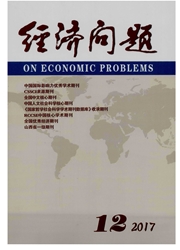

 中文摘要:
中文摘要:
在发展低碳经济的趋势下,新疆过高的能源强度成为其自身发展和全国节能工作的"短板",会给我国的节能减排工作造成越来越难以解决的障碍,因此新疆面临严峻的节能减排挑战。能源强度(单位GDP能耗)是一个地区能源综合利用效率指标,受到多方面因素的影响。本文编制了1992、1997、2002和2007年新疆30部门能源投入产出表,采用投入产出结构分解方法(SDA),全面并深入分析GDP变动、单位产出能耗(即直接能源消耗系数)、技术变动和最终需求(包括消费规模、消费结构、投资规模、投资结构和净出口)变动对新疆生产能源强度的影响效应,并基于节能降耗角度分析技术变动和最终需求对产业结构变动的影响效应。结果表明:1992-2007年技术变动、消费规模、消费结构、投资规模和投资结构均对新疆生产能源强度的降低起抑制作用,并推动了产业结构中低能耗部门比重的下降。最后结合测算结果与新疆资源经济的特殊性,从技术投入、投资与消费引导以及民生扶持等方面提出了新疆能源强度治理策略建议。
 英文摘要:
英文摘要:
Under the trend of low-carbon economy, high energy intensity in Xinjiang has become the bottleneck of Xinjiang development, and the national energy conservation, so Xinjiang is facing tough challenges on energy conservation. Energy intensity (energy consumption per unit of GDP) is a comprehensive regional energy efficiency indicator, which is influenced by various factors. Preparing the energy inpnt-outpnt tables of Xinjiang in the years of 1992, 1997, 2002 and 2007, the paper established the structural decomposition analysis (SDA) model of the energy intensity in production and the industrial structural shift in Xinjiang. Utilizing the model, the paper analyzed the effects of the changes of GDP, energy consumption per unit of output ( ie, direct energy consumption coefficient), technology, and final demand (including consumption volume, consumption structure, investment volume, investment structure and net exports) on the energy intensity in production, and the effects of the changes of technology and final demand on the industrial structural shift. The results showed that during 1992 and 2007, the changes of technology, consumption volume, consumption structure, investment volume and investment structure are disincentive to energy intensity reduction, but simulative to declining the share of low-energy-consumption sector in the industries. Finally, according to the results and the specificity of resources and economies in Xinjiang, the paper provided some policy recommendations of the energy intensity reduction approaches in Xinjiang from the aspects of technical inputs, investment and consumption guidance, and livelihood support.
 同期刊论文项目
同期刊论文项目
 同项目期刊论文
同项目期刊论文
 Exploring the core factors and its dynamic effects on oil price: An application on path analysis and
Exploring the core factors and its dynamic effects on oil price: An application on path analysis and 期刊信息
期刊信息
